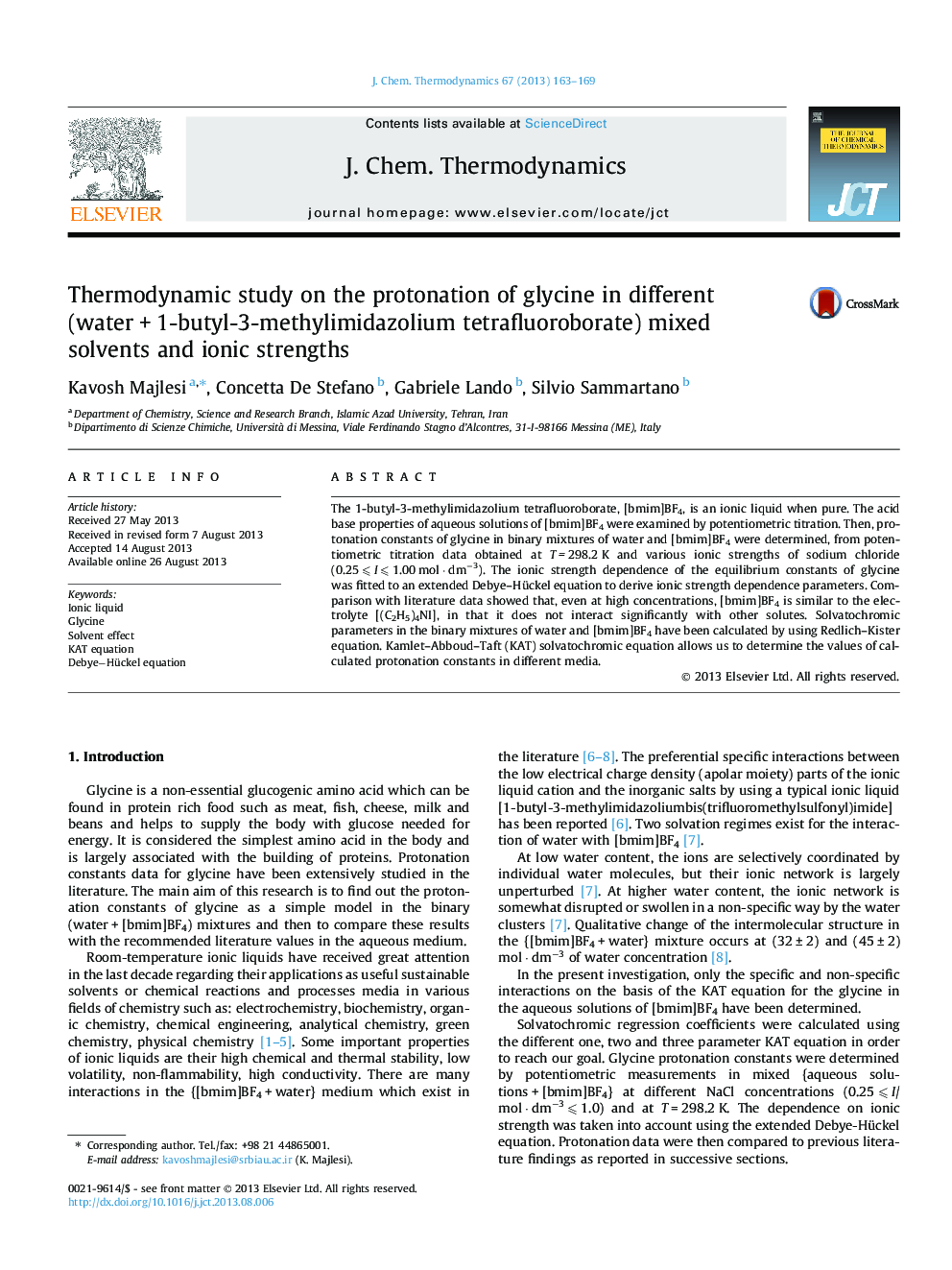| Article ID | Journal | Published Year | Pages | File Type |
|---|---|---|---|---|
| 215525 | The Journal of Chemical Thermodynamics | 2013 | 7 Pages |
•Dependence of glycine protonation constants on ionic strength.•The ionic strength dependence has been modeled with the extended Debye–Hückel equation.•The ionic liquid behaves like a not significantly interacting salt for % IL > 20%.•Kamlet–Abboud–Taft solvatochromic regression coefficients.
The 1-butyl-3-methylimidazolium tetrafluoroborate, [bmim]BF4, is an ionic liquid when pure. The acid base properties of aqueous solutions of [bmim]BF4 were examined by potentiometric titration. Then, protonation constants of glycine in binary mixtures of water and [bmim]BF4 were determined, from potentiometric titration data obtained at T = 298.2 K and various ionic strengths of sodium chloride (0.25 ⩽ I ⩽ 1.00 mol · dm−3). The ionic strength dependence of the equilibrium constants of glycine was fitted to an extended Debye–Hückel equation to derive ionic strength dependence parameters. Comparison with literature data showed that, even at high concentrations, [bmim]BF4 is similar to the electrolyte [(C2H5)4NI], in that it does not interact significantly with other solutes. Solvatochromic parameters in the binary mixtures of water and [bmim]BF4 have been calculated by using Redlich–Kister equation. Kamlet–Abboud–Taft (KAT) solvatochromic equation allows us to determine the values of calculated protonation constants in different media.
